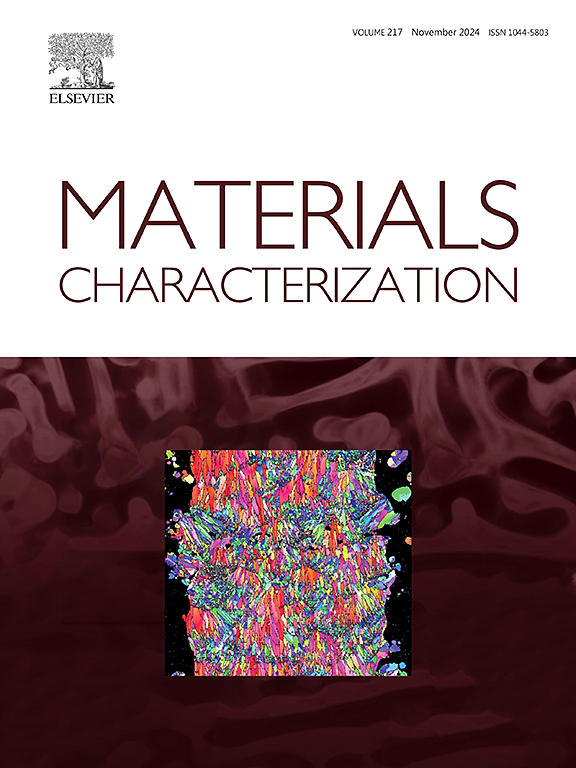Multi-scale fatigue crack growth behaviors within band mixed-grain structure in AlLi alloy
IF 4.8
2区 材料科学
Q1 MATERIALS SCIENCE, CHARACTERIZATION & TESTING
引用次数: 0
Abstract
The effect of band mixed-grain structure controlled by annealing treatment before solid solution on fatigue crack growth (FCG) properties in T8 aged 2A97 Al![]() Li alloy sheets was investigated systematically. The lamellar boundaries (LBs) and residual secondary phase particles inhibited the growth of recrystallized grains along normal direction. It ultimately resulted in a pronounced band mixed-grain structure. Annealing treatment significantly increased the fraction of sub-grains and the lower annealing temperature suppressed sub-grains coarsening. Fatigue cracks growing parallel to the sub-grain bands suffered great resistance leading to a significant reduction in FCG rate. At lower stress intensity factor range (ΔK), changes in stress field at the crack tip significantly diverted fatigue crack propagation direction, resulting in a millimeter-scale bending area in fatigue crack path. Moreover, the bending degree of fatigue crack is closely related with sub-grain size. Microscopic fatigue cracks grew mainly along the grain orientation boundaries (GOBs) caused by insufficient recrystallization. Its deflections and bifurcations were affected by the secondary phase particles and Schmid factor (SF). Large-sized brittle secondary phase particles tended to damage the fatigue properties of the matrix, while fine dispersoids reduced FCG rate. Bifurcations occurred when fatigue crack propagated in the R-cube orientated sub-grain regions with higher SF
Li alloy sheets was investigated systematically. The lamellar boundaries (LBs) and residual secondary phase particles inhibited the growth of recrystallized grains along normal direction. It ultimately resulted in a pronounced band mixed-grain structure. Annealing treatment significantly increased the fraction of sub-grains and the lower annealing temperature suppressed sub-grains coarsening. Fatigue cracks growing parallel to the sub-grain bands suffered great resistance leading to a significant reduction in FCG rate. At lower stress intensity factor range (ΔK), changes in stress field at the crack tip significantly diverted fatigue crack propagation direction, resulting in a millimeter-scale bending area in fatigue crack path. Moreover, the bending degree of fatigue crack is closely related with sub-grain size. Microscopic fatigue cracks grew mainly along the grain orientation boundaries (GOBs) caused by insufficient recrystallization. Its deflections and bifurcations were affected by the secondary phase particles and Schmid factor (SF). Large-sized brittle secondary phase particles tended to damage the fatigue properties of the matrix, while fine dispersoids reduced FCG rate. Bifurcations occurred when fatigue crack propagated in the R-cube orientated sub-grain regions with higher SF

求助全文
约1分钟内获得全文
求助全文
来源期刊

Materials Characterization
工程技术-材料科学:表征与测试
CiteScore
7.60
自引率
8.50%
发文量
746
审稿时长
36 days
期刊介绍:
Materials Characterization features original articles and state-of-the-art reviews on theoretical and practical aspects of the structure and behaviour of materials.
The Journal focuses on all characterization techniques, including all forms of microscopy (light, electron, acoustic, etc.,) and analysis (especially microanalysis and surface analytical techniques). Developments in both this wide range of techniques and their application to the quantification of the microstructure of materials are essential facets of the Journal.
The Journal provides the Materials Scientist/Engineer with up-to-date information on many types of materials with an underlying theme of explaining the behavior of materials using novel approaches. Materials covered by the journal include:
Metals & Alloys
Ceramics
Nanomaterials
Biomedical materials
Optical materials
Composites
Natural Materials.
 求助内容:
求助内容: 应助结果提醒方式:
应助结果提醒方式:


